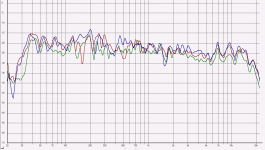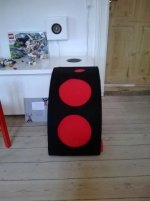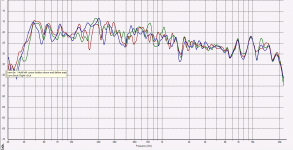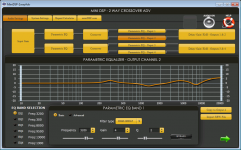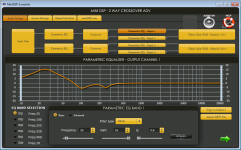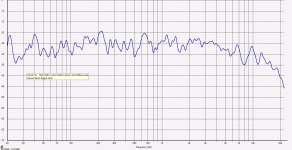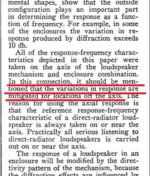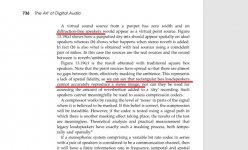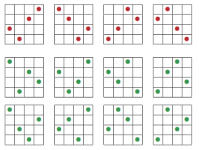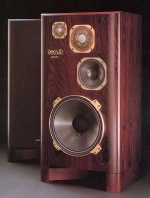So it seems to me, you are on a good way finally ... not too radical, but practical and still within "your preferred approach".
yeah, definitely more populist
.... I will look a bit like AudioPro Qube but the top baffle will be tilted at 45 degrees and the driver will be Kef CI200QR.
The Qube sound nice. I own a pair. Currently using them as surround channels to OA-52 fronts.
//
OA-52 fronts.
classic diagonal flooder, perhaps even short enough to be called "FCUFS"
An externally hosted image should be here but it was not working when we last tested it.
tell us more please - how You placed them in Your room etc.
160 degree measurements in normal listening room
1 meter almost from side (80 degree) - direct in front (red) - and one meter from other side (-80 degree).
Using Holm - but the sweep have just right now begun to make som strange noise, when going up in high frequencies, but still hope it gives some usefull information
Mine are 55 cm high
1 meter almost from side (80 degree) - direct in front (red) - and one meter from other side (-80 degree).
Using Holm - but the sweep have just right now begun to make som strange noise, when going up in high frequencies, but still hope it gives some usefull information
Mine are 55 cm high
Attachments
you don't have to place drivers at the floor level anymore
.
Question is what is achieved by the floor level up-firing position of a 8 inches coaxial that is not lost in 45 degrees diagonal positioning of it at 75 cm?
Is it a matter of the spectral content of the floor reflection which is low-passed whereas the ceiling reflection is stronger than in the case of a conventional forward firing speaker?
Or maybe it's rather a matter of ...diffraction? I mean - of effective lack of certain diffraction effects?
Attachments
Last edited:
in this context:
We need to talk about SPEAKERS: Sorry, 'audiophiles', only IT will break the sound barrier ? The Register
Point spread function (left) before servicing (right):

ps.
from the same author:
https://books.google.pl/books?id=Ch...EPPWRgMAK&ved=0CDUQ6AEwAw#v=onepage&q&f=false
We need to talk about SPEAKERS: Sorry, 'audiophiles', only IT will break the sound barrier ? The Register
Most legacy speakers have massive point spread functions due to diffraction from inept enclosure design and their stereophonic images are badly smeared.
Point spread function (left) before servicing (right):

ps.
from the same author:
https://books.google.pl/books?id=Ch...EPPWRgMAK&ved=0CDUQ6AEwAw#v=onepage&q&f=false
Attachments
Hi Oliver,
I tend to disagree.
To me this appears as a better and more logical requirement than yours:
Rudolf
Well, regarding to "the phase coherence of harmonics in the vocal formant range, ~630Hz to 4000Hz", it is unfortunate but it cannot be achieved in stereo triangle type of speaker placement.
Stereophonic interaural cross-talk has a transfer function with non linear phase response. Harmonic phases will be mocked up regardless what speakers are used.
It is a fundamental flaw of stereo triangle for center panned sounds. Mostly vocals are mixed at center so the effect is at worst level where it should not happend at all.
To advance, we must remove the stereo triangle

.
Diffuse reflections are to be preferred.
...
Ideal would be a combination of on axis and near axis coherence and flatness, combined with a phase decorrelation at larger off axis angles.
This is easy to do ?
Yes !
All is needed is a 2D pseudorandom location element array. It has on axis gain and phase responses close to that of a single driver, but off axis phase is very random. Also, off axis gain is much smoother than from a regular conventional array.
Maybe Gilbert / Costas array can help here ? It is a 2D arrangement of cells
Costas array - Wikipedia, the free encyclopedia
For example, take one arrangement from these N=4 arrays:
.
Attachments
This is easy to do ?
Yes !
All is needed is a 2D pseudorandom location element array. It has on axis gain and phase responses close to that of a single driver, but off axis phase is very random. Also, off axis gain is much smoother than from a regular conventional array.
my thoughts exactly - but isn't it a kind of a head-in-a-vise solution?
Well, regarding to "the phase coherence of harmonics in the vocal formant range, ~630Hz to 4000Hz", it is unfortunate but it cannot be achieved in stereo triangle type of speaker placement.
Stereophonic interaural cross-talk has a transfer function with non linear phase response. Harmonic phases will be mocked up regardless what speakers are used.
It is a fundamental flaw of stereo triangle for center panned sounds. Mostly vocals are mixed at center so the effect is at worst level where it should not happend at all.
To advance, we must remove the stereo triangle
.
or we must remove the interaural cross-talk somehow
or would it be sufficient just to reduce its level to a certain degree?
or to do something else, but what?
For example - is there any CTC method built into the matrixed SSS or into the "stereolit with the direct sound blocked"?
Last edited:
For example, take one arrangement from these N=4 arrays:
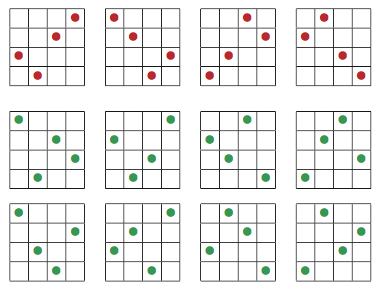
looks familiar?

Attachments
after 30 years Philips revives James Croft's proposed solution to the FCUFS soundstage height issues:
http://www.diyaudio.com/forums/mult...upled-up-firing-speakers-169.html#post3180924
Philips PS1

It IS possible, by a few different methods, to raise the height of the sound stage with the speaker boundary coupled close to the floor.
...
The psycho-acoustics of the situation is that we receive most of our information relative to image height from frequencies above 4 kHz, at least when we keep our head perfectly vertical. in actuality, we are always tilting our heads sideways a small amount as we listen to music and this allows our ear/brain system to start to use left/right ear comparison for vertical imaging, which lowers the frequency sensitivity down below 1 kHz for vertical detection.
Even so, one approach is to use the midrange or woofer/midrange driver floor coupled, while placing the tweeter up at ear level, crossing over at about 2 to 3 kHz with precision 8th order slope crossovers to minimize lobing in the vertical polar response at and near the crossover frequency. With this approach the tweeter provides the height information ... This approach has a number of things that have to be carefully optimized to work effectively ... but it can be made to work reasonably well.
http://www.diyaudio.com/forums/mult...upled-up-firing-speakers-169.html#post3180924
Philips PS1

Hi guys! I'm all new here, this is my first post ever... I'm very much a DIY-noob, but I've been lurking for some time.
I'm currently in the process of deciding whether to stick with a pair of speakers like the ones that are discussed in this thread, or go for the more traditional box speaker approach. So that's why I'm writing, to get your opinions. Apologies if it has already been covered in the thread! (I must admit I haven't read all of it)
I currently have two pairs of speakers at my home. The first pair are the Enigma 5 from Heed Audio.

I had these earlier. Due to their dispersion characteristics they create a very pleasant "airy" sensation of being right there in the middle of the music. It's like it's not thrown at me, but rather around me. I have never heard any other speaker give me the same sensation of being there, right inside the musical action. As far as I'm concerned, the speaker design that Heed have chosen for the Enigmas seem to be the kind of speaker design that suit my tastes the most.
But then I got the chance to hear a pair of active monitor speakers, DM10 from AVI. These speakers have a level of clarity and dynamics that I don't think I've heard in any speaker. According to the manufacturer, this is due to both the fact that they're active, and the very high quality of the drivers. I was blown away, and bought them. But I couldn't bring myself to sell the Enigma 5, since they are so wonderful in so many ways...
What I'm wondering, is whether you think it could be possible to improve significantly on the Heed 5 by modding them? That is - remove the internal passive crossover and do an external digital crossover, and also upgrade the drivers to drivers of a even higher quality.
Are there any specific drivers that have been mentioned in the thread which are especially suited for this kind of loudspeaker?
And hope it's ok that I join the thread as a complete noob...
I'm currently in the process of deciding whether to stick with a pair of speakers like the ones that are discussed in this thread, or go for the more traditional box speaker approach. So that's why I'm writing, to get your opinions. Apologies if it has already been covered in the thread! (I must admit I haven't read all of it)
I currently have two pairs of speakers at my home. The first pair are the Enigma 5 from Heed Audio.

I had these earlier. Due to their dispersion characteristics they create a very pleasant "airy" sensation of being right there in the middle of the music. It's like it's not thrown at me, but rather around me. I have never heard any other speaker give me the same sensation of being there, right inside the musical action. As far as I'm concerned, the speaker design that Heed have chosen for the Enigmas seem to be the kind of speaker design that suit my tastes the most.
But then I got the chance to hear a pair of active monitor speakers, DM10 from AVI. These speakers have a level of clarity and dynamics that I don't think I've heard in any speaker. According to the manufacturer, this is due to both the fact that they're active, and the very high quality of the drivers. I was blown away, and bought them. But I couldn't bring myself to sell the Enigma 5, since they are so wonderful in so many ways...
What I'm wondering, is whether you think it could be possible to improve significantly on the Heed 5 by modding them? That is - remove the internal passive crossover and do an external digital crossover, and also upgrade the drivers to drivers of a even higher quality.
Are there any specific drivers that have been mentioned in the thread which are especially suited for this kind of loudspeaker?
And hope it's ok that I join the thread as a complete noob...
- Home
- Loudspeakers
- Multi-Way
- The Advantages of Floor Coupled Up-Firing Speakers
